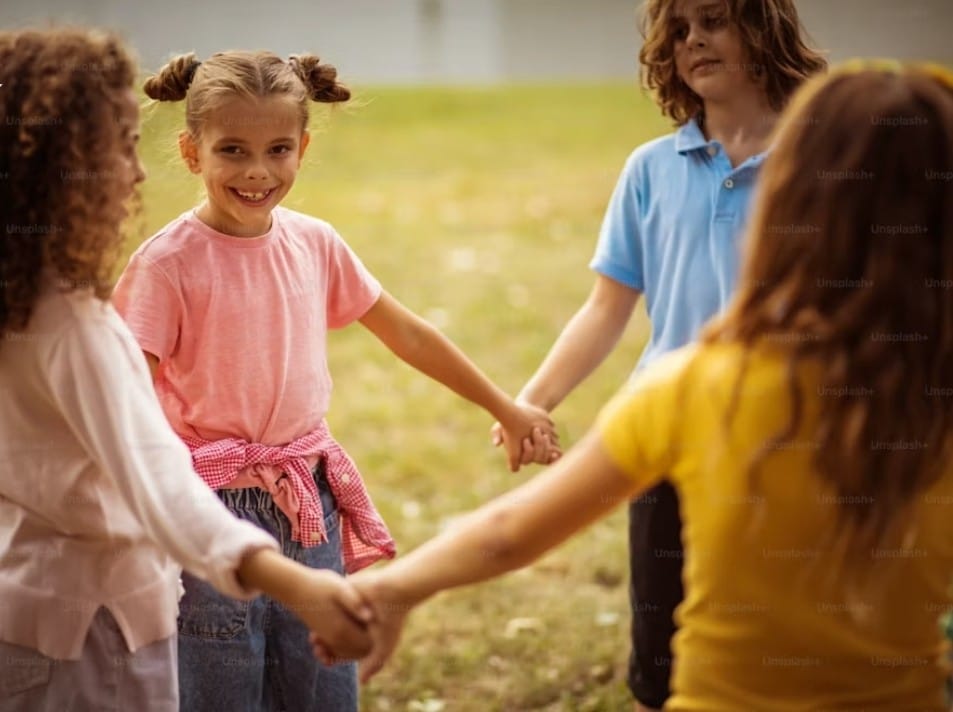Nurturing Social Skills in Children: Lessons from My Practice
Helping kids develop social skills builds confidence and connection. Tailored strategies, patience, and support make every step meaningful!

One of the most fulfilling aspects of my work has been helping children develop the social skills they need to build relationships and navigate the complexities of life. Every child is unique, and while some naturally pick up social cues, others may need targeted guidance to thrive in social settings. In this blog, I’ll share strategies and experiences from my practice that have helped children—and their families—foster meaningful connections.
Why Social Skills Matter
Social skills are the foundation for friendships, effective communication, and problem-solving. For children, particularly those with developmental challenges like Autism Spectrum Disorder (ASD), these skills don’t always come easily.
One of my clients, Liam, a bright 7-year-old with ASD, struggled to make friends. He had difficulty interpreting social cues and joining group activities. His parents worried about his isolation, and I knew that with the right strategies, we could support Liam in navigating social situations with more confidence.
Key Skills We Focused On
1. Communication
• Teaching both verbal and non-verbal communication was critical for Liam. Together, we practiced greeting peers, making eye contact, and recognizing facial expressions.
2. Empathy
• We worked on helping Liam understand how others might feel in different situations. For instance, I used storytelling to explore emotions, asking him, “How do you think this character feels?”
3. Cooperation
• Group games became a powerful tool for teaching Liam to take turns, share, and work collaboratively with others.
4. Problem-Solving
• Role-playing exercises helped Liam learn how to handle conflicts, such as what to do if a peer didn’t want to share a toy.
Strategies That Worked
- Role-Playing Social Scenarios
Liam was shy about approaching peers, so we practiced common social interactions through role-play. For example, we acted out how to join a group activity or introduce himself to a new friend.
One memorable moment was when Liam rehearsed introducing himself for a class presentation. The next day, his teacher shared that Liam had confidently walked up to a classmate and said, “Hi, I’m Liam. Can I play with you?” It was a small yet significant milestone.
- Structured Playdates
Liam’s parents were hesitant about organizing playdates, fearing rejection or awkward moments. I encouraged them to start small, inviting one peer for a short, structured activity like building with blocks or playing a board game.
These playdates became an opportunity for Liam to practice his skills in a safe, controlled environment. Over time, he began initiating conversations and games with his peers, which greatly boosted his confidence.
- Visual Aids and Social Stories
Visual aids were invaluable for teaching Liam social concepts. Together, we created a social story about how to join a group activity. The story broke down the steps: observing what others were doing, asking to join, and waiting for a response.
One day, Liam’s mother excitedly told me how he used those exact steps to join a game of tag at school. “He’s never done that before,” she said, beaming with pride.
- Teaching Emotional Regulation
Like many children, Liam sometimes became frustrated or anxious during social interactions. To help him manage these feelings, we used a mood chart where he could identify his emotions and choose calming strategies, such as deep breathing or asking for a break.
Activities That Made a Difference
- Group Games
Games like “Simon Says” and board games taught Liam essential skills like turn-taking and listening to instructions.
- Emotion Charades
This fun activity helped Liam recognize and interpret emotions through facial expressions and body language. He loved acting out different feelings, and it became a bonding activity for him and his family.
- Storytelling
Narrating and acting out stories encouraged Liam to express himself and understand others’ perspectives. It was also a creative way to build his communication skills.
Overcoming Challenges
Helping Liam wasn’t without its challenges. He was initially reluctant to engage in group settings, and his parents worried about his slow progress. But with patience and persistence, Liam’s comfort level grew.
We started with smaller groups and gradually increased the complexity of his social interactions. His parents played a crucial role by reinforcing these lessons at home and providing consistent encouragement.
Liam’s Transformation
After months of targeted interventions, Liam’s transformation was remarkable. He began initiating conversations with peers, joining group games at recess, and even inviting friends over for playdates. His parents couldn’t believe how far he had come.
One day, his mother shared, “He came home from school and told me about a game he played with his classmates. That’s the first time he’s ever talked about playing with others.”
What I’ve Learned
1. Every Child Learns Differently: Tailoring strategies to a child’s unique needs ensures better results.
2. Consistency is Key: Aligning efforts between home and school creates a supportive environment for growth.
3. Celebrate Small Wins: Each milestone, no matter how small, is a step toward greater confidence and independence.
Conclusion: Building Bridges to Connection
Social skills development is a journey, but with the right strategies, patience, and support, every child can learn to navigate social interactions successfully. Liam’s story is a testament to the power of collaboration between parents, educators, and professionals.
If you’re a parent or educator supporting a child in their social skills journey, know that progress takes time—but every step forward is worth it.
What strategies have worked for you in fostering social skills? Share your experiences in the comments—I’d love to hear your stories!
